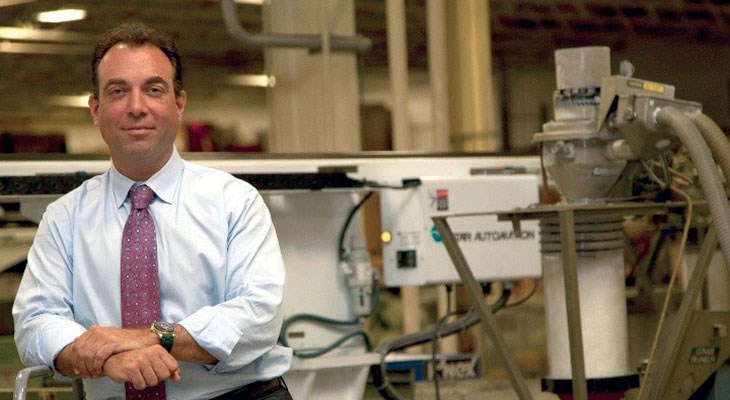The idea behind K’NEX courting private equity late in 2014 was to push the successful toymaker’s wildly popular plastic building sets into China.
“Having had success in the UK, we felt like we were at an inflection point where either we’re going to do it all on our own or, if we could get a financial partner with expertise specifically in China, that it would make for a good springboard to grow more quickly,” says Michael Araten, the toymaker's former CEO who still leads K'NEX creator Rodon Group as well as Sterling Drive Ventures.
Cathay Capital North America won the deal in 2016, not because of the PE firm’s financial muscle — Araten says there were literally trillions of dollars chasing deals at the time — but because of its connections to decision makers on the ground in China and its network of high-level, been-there-done-that, Fortune 500 experts-turned-advisers.
Here’s how Araten chose the best private equity partner to back his international expansion — before K'NEX became collateral damage from the Toys 'R' Us bankruptcy and was sold.
The value of expertise
Rather than retaining a formal investment banker as an adviser, Araten retained former toy CEOs who had done a fair amount of advising on, and M&A transactions in, the toy space over the previous decade. He wanted them to help K’NEX filter firms for expertise, rather than capital. Heading into the China market, it was critical to hit the ground with the right partnerships, distribution opportunities and supply chain. Cathay Capital was ultimately the choice, and the influence of the PE firm was soon felt.
“The first big difference was the ability to filter out real partners from not real partners in China, which is, from someone sitting here in suburban Philadelphia, just hard to do,” Araten says. “They’ve got 80 people on the ground in China. They’ve had long-term relationships literally from the premier of China on down. And when we were talking to companies about doing distribution deals, warehouse deals, social media deals, we were talking with the premiere companies. We had meetings with Tencent, with Alibaba and others, and at senior levels that we never could have gotten without their particular relationships and expertise.”
The deal with the firm also took away the worry of funding for its growth initiatives and linked K’NEX to both financial and operational expertise, the latter from the likes of people who had worked with large, international brands, such as Microsoft Xbox, LuLuLemon and Nike.
“Seeing things from the Fortune 500 perspective and then being able to adapt them for a middle-market company trying to grow was incredibly valuable,” he says.
Compromise or walk away
The full-throttle drive into China came at a cost of majority ownership, something Araten says owners need to understand before talks for private equity backing can begin in earnest. That can bring with it a new hierarchical structure and reporting requirements that many in the middle-market C-suite who’ve grown accustom to answering only to themselves might find cumbersome, if not unbearable.
For K’NEX, it meant additional layers of bureaucracy, increased frequency of financial reporting and quarterly board meetings that were more formal than ownership’s family meetings.
Having 15 years outside the family business in which he reported to bosses and boards, Araten says he was able to take these formalities is stride. But some CEOs might be less prepared for the shift.
“I tell CEOs — and especially family owners — that we went in with pretty open eyes,” he says. “We figured if we’re selling a majority stake then we’re willing to give up this control. That’s the deal. That’s the tradeoff. And you’re giving that up for a better future, hopefully, more expertise, more resources, more support. If you aren’t built that way, to be able to do that, then you should either sell 100 percent and walk away or you shouldn’t do it because there’s definitely more oversight.”
Avoid black swans
For companies looking for PE backing, Araten says take your time.
“Really look at references of the people who have done deals with these people before,” he says. “Find out what their average exit time is. Look at what have they done when times are tough because everybody’s got good plans going in and sometimes the plans, you know … black swans arrive,” he says.
He also advises CEOs to come to terms with the fact that you’re giving up control and go as far as determining what your day-to-day will look like post-transaction.
Araten recommends negotiating no longer than a three-year contract for yourself with options to renew. He says you’re not going to know how you’ll feel if it doesn’t go well, so give yourself an out if the fit isn’t as good as you’d hoped.
Lastly, Araten gives a nod to the professionals who will help guide and structure the deal — those who cross the all-important T’s and dot the elusive I’s.
“You will think that the advisers, especially the tax advisers and the lawyers, cost too much,” he says. “But they’re worth it. They’ve seen many more deals than you as an owner will ever see, and they will help you structure a transaction where you get the most out of it now and get more out of it over time.
“Those advisers are critical and useful. While it’s not fun to pay $600, $700, $800 per hour, it’s worth it.”




